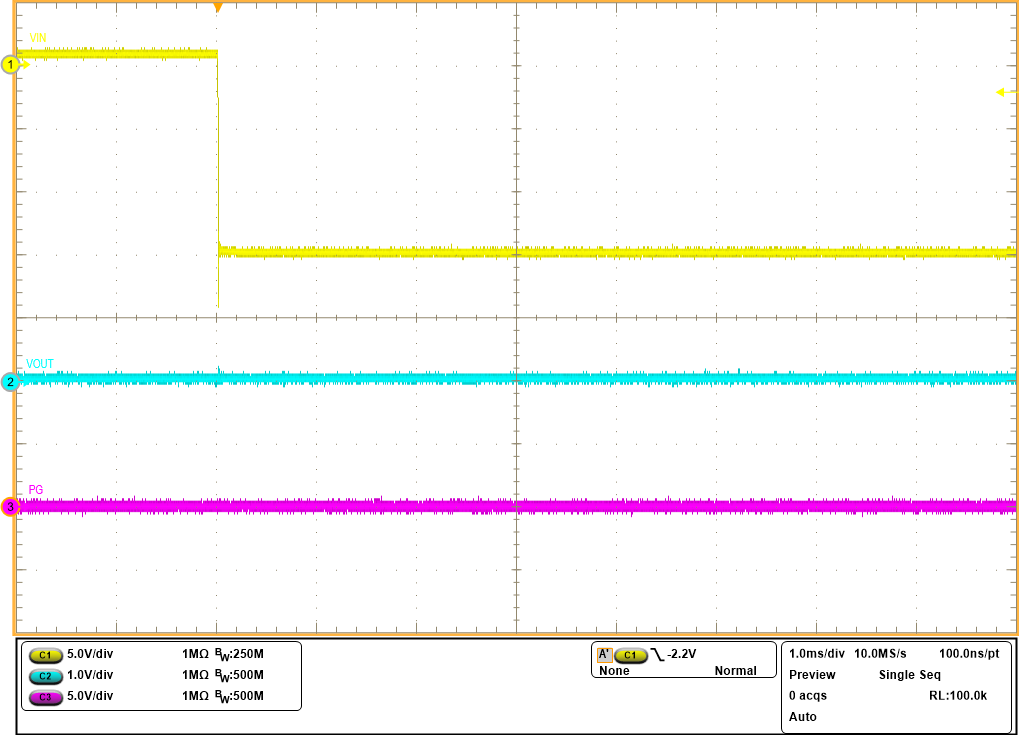SNOU173A October 2020 – December 2020 LM7310
5.5 Input Reverse Polarity Test
Use the following instructions to perform Input Reverse Polarity test:
- Remove input TVS diode (D2).
- Set the input supply voltage VIN to 15 V and current limit of 5 A. Apply the supply in reverse polarity at J5 and enable the power supply.
- Observe VOUT and Input Current waveforms using an oscilloscope.
Figure 5-6 shows input reverse polarity response of LM73100 on LM73100EVM Ideal Diode Evaluation Board.
 Figure 5-6 Input Reverse Polarity Protection Response of LM73100 Device
Figure 5-6 Input Reverse Polarity Protection Response of LM73100 Device